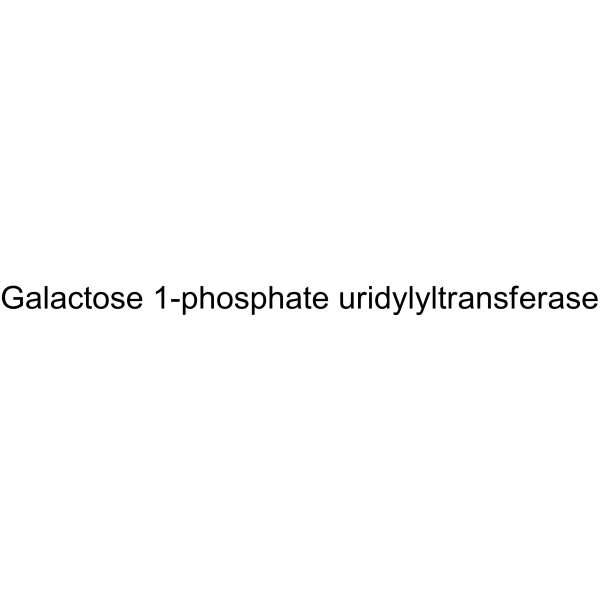Galactose 1-phosphate uridylyltransferase

Galactose 1-phosphate uridylyltransferase structure
|
Common Name | Galactose 1-phosphate uridylyltransferase | ||
|---|---|---|---|---|
| CAS Number | 9016-11-9 | Molecular Weight | N/A | |
| Density | N/A | Boiling Point | N/A | |
| Molecular Formula | K2CrO4 | Melting Point | N/A | |
| MSDS | USA | Flash Point | N/A | |
|
Complete sequencing and characterization of 21,243 full-length human cDNAs.
Nat. Genet. 36 , 40-5, (2004) As a base for human transcriptome and functional genomics, we created the "full-length long Japan" (FLJ) collection of sequenced human cDNAs. We determined the entire sequence of 21,243 selected clones and found that 14,490 cDNAs (10,897 clusters) were unique... |
|
|
The status, quality, and expansion of the NIH full-length cDNA project: the Mammalian Gene Collection (MGC).
Genome Res. 14 , 2121-7, (2004) The National Institutes of Health's Mammalian Gene Collection (MGC) project was designed to generate and sequence a publicly accessible cDNA resource containing a complete open reading frame (ORF) for every human and mouse gene. The project initially used a r... |
|
|
The sequence of the human genome.
Science 291(5507) , 1304-51, (2001) A 2.91-billion base pair (bp) consensus sequence of the euchromatic portion of the human genome was generated by the whole-genome shotgun sequencing method. The 14.8-billion bp DNA sequence was generated over 9 months from 27,271,853 high-quality sequence rea... |
|
|
DNA sequence and analysis of human chromosome 9.
Nature 429(6990) , 369-74, (2004) Chromosome 9 is highly structurally polymorphic. It contains the largest autosomal block of heterochromatin, which is heteromorphic in 6-8% of humans, whereas pericentric inversions occur in more than 1% of the population. The finished euchromatic sequence of... |
|
|
One-pot enzymatic production of 2-acetamido-2-deoxy-D-galactose (GalNAc) from 2-acetamido-2-deoxy-D-glucose (GlcNAc).
Carbohydr. Res. 346 , 2432-2436, (2011) 2-Acetamido-2-deoxy-D-galactose (GalNAc) is a common monosaccharide found in biologically functional sugar chains, but its availability is often limited due to the lack of abundant natural sources. In order to produce GalNAc from abundantly available sugars, ... |
|
|
The high fermentative metabolism of Kluyveromyces marxianus UFV-3 relies on the increased expression of key lactose metabolic enzymes.
Antonie van Leeuwenhoek 101(3) , 541-50, (2012) The aim of this work was to obtain insights about the factors that determine the lactose fermentative metabolism of Kluyveromyces marxianus UFV-3. K. marxianus UFV-3 and Kluyveromyces lactis JA6 were cultured in a minimal medium containing different lactose c... |
|
|
Mutational spectrum of classical galactosaemia in Spain and Portugal.
J. Inherit. Metab. Dis. 29(6) , 739-42, (2006) Classical galactosaemia is an autosomal recessive inherited metabolic disorder due to deficient galactose-1-phosphate uridyltransferase (GALT). Over 180 different base changes and disease-causing mutations have been reported in the GALT gene. Mutation p.Q188R... |
|
|
Molecular characterization of the H319Q galactosemia mutation.
Hum. Mol. Genet. 2(3) , 325-6, (1993)
|
|
|
Structural and molecular biology of type I galactosemia: disease-associated mutations.
IUBMB Life 63(11) , 949-54, (2011) Type I galactosemia results from reduced galactose 1-phosphate uridylyltransferase (GALT) activity. Signs of disease include damage to the eyes, brain, liver, and ovaries. However, the exact nature and severity of the pathology depends on the mutation(s) in t... |
|
|
Screening newborns for galactosemia using total body galactose oxidation to CO2 in expired air.
Pediatr. Res. 62(6) , 720-4, (2007) Classic galactosemia is caused by impaired galactose-1-phosphate uridyltransferase (GALT EC 2.7.712). If discovered and treated within the first days of life, the acute problems of hepatocellular damage, sepsis, and death are prevented. However, chronic probl... |